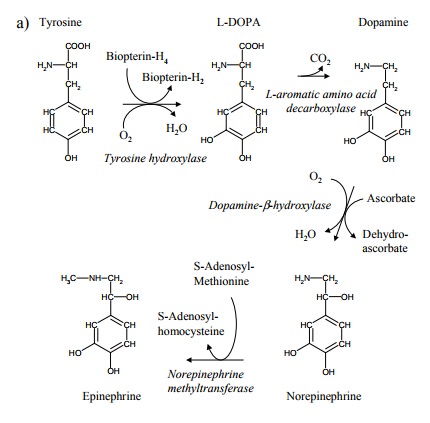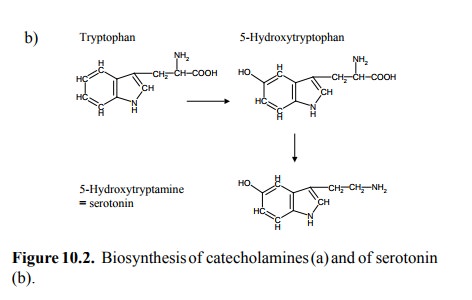Chapter: Biochemical Pharmacology : G protein-coupled receptors
Pharmacology of catecholamines and of serotonin
Pharmacology of catecholamines
and of serotonin
The catecholamines (named for
the catechol moiety that is part of their structure, Figure 10.1) are important
in both the peripheral autonomic system and the central nervous system. Key
functions in the periphery are regulation of heart rate and blood pressure. In
the brain, they are in-volved in the regulation of posture and movement, and of
psychical functions such as mood and alertness.

Although all three mediators
occur both peripherally and centrally, dopamine and norepinephrine are the main
ones found as transmitters in the brain, whereas norepinephrine and epinephrine
are more important than dopamine in the periphery. Norepinephrine occurs in
both synapses and in the adrenal gland, whereas epinephrine is mainly found in
the adrenal gland and thus really is a hormone more than a transmitter.


Serotonin is a mediator
similar to the catecholamines that is derived from tryptophan rather than
tyrosine (Figure 10.2b). It also occurs as a mediator in the periphery, but its
major interest in clinical pharmacology is due to its role in the central
nervous system, where it shares with the cate-cholamines in the regulation of
mood. The functional orga-nization of synapses for both catecholamines and
serotonin is closely similar, so that it is useful to discuss them
side-by-side.
Related Topics